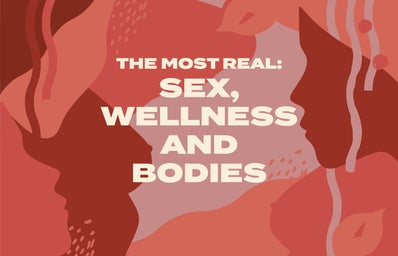With social media today, it’s easier than ever to be an activist. With a quick reshare, comment, like, or repost, information is spreading like wildfire and it is making issues that were often “taboo” easier than ever to address. So let’s talk about sex; sex and sexuality are a fundamental part of being human and plays an important role in our identity. While it means something different to everyone, it’s important to discuss healthy habits while having sex.
With the rise of the MeToo movement, which started in 2006 but became more popular in 2017, there has been a strong effort to spread awareness on understanding consent. What is consent? How do you approach getting consent without being awkward? How do you navigate consent for the first time? In a study done by the Guttmacher Institute, 71% of men between the age of 18-24 described their first time having sex (sex in this study defined as penile – vaginal sex) as wanted, compared to their female counterpart, where only 45% said it was wanted, and 51% had mixed feelings (Guttmacher Institute). This disparity among genders shows that clear consent by both parties often isn’t present and only exacerbates the need for conversations about consent.
Accordimg to the CDC, more than 1 in 3 women and nearly 1 in 4 men have experienced sexual violence in their lifetime (CDC). These aren’t just statistics, but real life people – mothers, sisters, brothers, and friends, who are targeted and must now suffer with the many repercussions that come with sexual violence, whether it be social isolation, disease or infection, anxiety, depression, or even PTSD.
But sexual abuse doesn’t have to be physical or violent to be harmful. Violence via microaggressions or verbal or non-verbal actions continue to haunt those around us and only fuel the flames of sexual violence worldwide. In a recent survey done by the UN Women, the U.K. found that 97% of women between the age of 18 – 24 have been sexually harassed and 96% of these women don’t report these situations because they would find it ineffective (UNUK 2021). So consent isn’t the only issue; many feel as though they cannot confide in the systems that are supposed to support them in these situations. This, paired with society’s “victim blaming” phenomenon, often leaves those who have been assaulted or harassed feeling even more helpless and hopeless.
The effects of assault and harrasement are not exclusivley reserved to mental health decline, but sexual violence can lead to an increased spread of Sexually Transmitted Diseases (STDs) or Infections (STIs). In a study done in 1990, a group of women were screened following rape, and 14.4% of them were diagnosed with an STD (Lacey 1990). Due to the power difference in a sexually abusive situation, safe sex methods such as condoms are often not used, making the victim more vulnerable and susceptible to sexual disease.
But victims of sexual assault are not the main demograohic contributing to the STD epidemic. While there are certain behaviors that are more prone to the spread of STDs, such as unprotected anal sex, there are simple actions that can prevent the spread of STDs and STIs. Simple behaviors such as wearing condoms and being honest about your sexual history can prevent the spread of STDs and STIs such as Chlamydia and Gonorrhoea. Yet, despite the rise in social media awareness in sexual health and consent, condom use in young people (14 -18) has steadily been decreasing. From 2007 to 2017, condom use among U.S. high school students fell from 62% to 54%. It’s no coincidence that people aged 15 – 24 contribute to half of the new cases of STDs annually (CDC). So there’s an increase of reposting an image about safe sex and consent, but when it comes down to it, we’re not wrapping up when we’re getting down and dirty.
Practicing safe sex doesn’t just mean lowering the chances of getting an STD or STI, but it enhances the experience for both partners involved. By being comfortable with discussing boundaries and ensuring consent, both partners will be more comfortable and able to communicate about what they do and don’t enjoy. No diseases and a better experience? Talk about a win – win.
Sources:
Bibliography
Akers, Whitney. “Why are so many teens ditching condoms?” Healthline.com, https://www.healthline.com/health-news/why-are-so-many-teens-ditching-co….
CDC. “Sexual Violence.” CDC.Gov, https://journals.sagepub.com/doi/abs/10.1177/095646249000100603.
Guttmacher Institute. “Adolescent Sexual and Reproductive Health in the United States.” Guttmacher.Org, 2019, https://www.guttmacher.org/fact-sheet/american-teens-sexual-and-reproduc….
Lacey, H.B. “Sexually Transmitted Disease and Rape: The experience of a sexual assault center.” International Journal of STDs and AIDS, 1990, https://journals.sagepub.com/doi/abs/10.1177/095646249000100603.
Maryville University. “Understanding the MeTOo Movement: A sexual Harassment Awareness Guide.” maryville.edu, https://online.maryville.edu/blog/understanding-the-me-too-movement-a-se….
UN Women UK. “Research finds that 97% of women in the UK have been sexually harassed.” openaccessgovernment.org, https://www.openaccessgovernment.org/97-of-women-in-the-uk/105940/.


